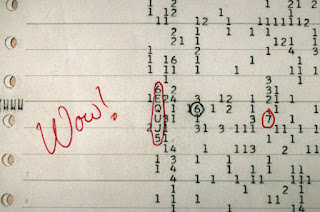Boring Boron?
‘Boring Boron’ is an
unfortunate phrase that I have become all too familiar with throughout my
undergraduate and postgraduate study. This alliterative slogan has a ring to it
that needs addressing. Recently I wrote an article regarding this topic and I
intend to write more in a series. However, rather than wait for publication
here is just one reason of many as to why boron isn’t boring.
The birth of boron is certainly not boring. Usually light elements such as hydrogen and helium are produced under the extremely dense and hot conditions of primordial nucleosynthesis during the early universe. Heavier elements such as nitrogen and oxygen are produced under the similar conditions of stellar nucleosynthesis. In both processes’ fusion occurs to produce nuclei, these nuclei are comprised on protons and neutrons (fundamental building blocks).
Figure 1: Stellar nucleosynthesis pathways, a) neutron capture and b) alpha process, protons are in purple and neutrons in brown.
Oxygen-16 (16O) requires the fusion of four helium-4 (4He) nuclei together. This is called the alpha process and produces carbon-12 (12C) and photons (particles of light) along the way. Should this 12C capture two neutrons (0N) the radioisotope carbon-14 (14C) is produced, this emits a positron (opposite of an electron) and nitrogen-14 (14N) in a process called beta decay. Under these conditions, 0N capture is extremely quick an is referred to as an r-process (rapid process).
Boron on the other hand is very special, it is produced under the cool conditions of cosmic nucleosynthesis and requires 14N, 16O and high energy 0Ns present in cosmic rays which permeate the entirety of space:
Figure 2: Cosmic nucleosynthesis pathways, a) 11B formation and b) 10B formation,
The formation of boron-11 (11B) involves 14N capturing a 0N to form the radioisotope nitrogen-15 (15N). This then undergoes alpha decay to produce a 4He nuclei and 11B. The formation of boron-10 involves a double 0N capture to produce beryllium-10 (10Be) and two 4He nuclei in an alpha decay process. 10Be then emits an electron via beta decay to produce 10B. Given the cool conditions of space 0N capture is incredibly slow and is referred to as an s-process (slow process).
Given that cosmic rays permeate through the entirety of the universe and 14N and 16O are provided through supernova deaths of stars, cosmic nucleosynthesis of boron occurs almost everywhere, slowly. Yet no one knows why the terrestrial ratio of 10B and 11B is 1:4 respectively? Some speculate that whilst the isotopic ratio in the Earth’s atmosphere during the early solar system was homogenous, the difference arises from our suns nucleosynthesis of the elements 14N and 16O at different rates during the solar systems evolution.
Boron’s patient yet mysterious journey will be continued…






Comments
Post a Comment